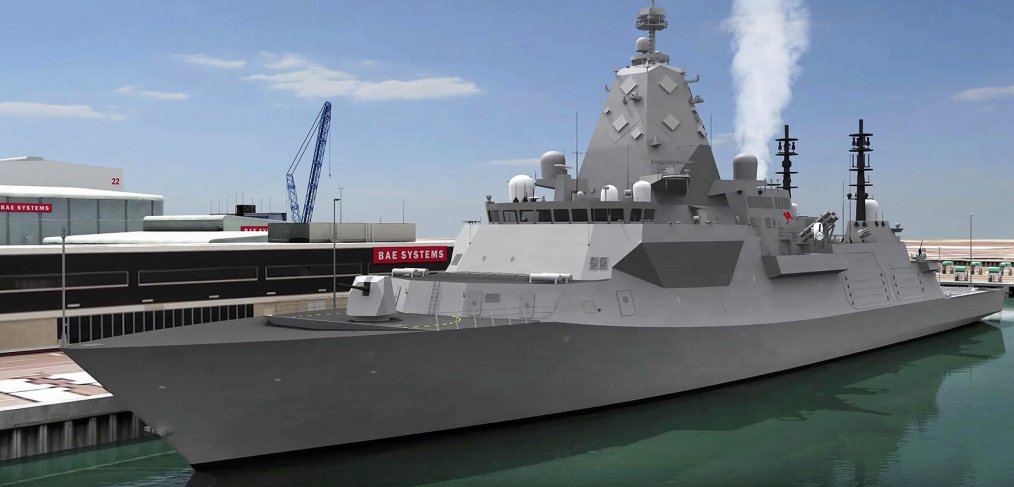BAE Systems Australia, ASC Shipbuilding and Flinders University have announced a new collaborative effort to bring Industry 4.0 and advanced manufacturing to the Hunter Class frigates in South Australia’s new digital shipyard.
ASC Shipbuilding, BAE Systems Australia’s shipbuilding business, will deliver nine Hunter Class frigates to the Royal Australian Navy over the next three decades.
The new partnership will set up a digital test and trial laboratory as part of Flinders University’s advanced manufacturing research facilities based at the Tonsley Innovation District in South Australia.
In the laboratory, researchers, ASC Shipbuilding and suppliers will be developing and testing the technologies that future shipyard workers will use at the new digital shipyard, currently under construction within the Osborne Naval Shipyard precinct.
Managing director of ASC Shipbuilding Craig Lockhart said that applying digital technology in a shipbuilding facility will require a fundamental shift in how the industry has traditionally operated.
"We are establishing a world-leading shipyard right here in Australia – it will mean autonomous ground delivery vehicles, paperless work orders, cobots, laser scanning and projection, virtual reality, and part and tool tracking, just to name a few technologies," Lockhart said.
The partnership will bring together the latest technologies from industries such as mining, automotive and construction, and they will be adapted, trialled and tested to suit the Hunter Class frigate’s design – specifically for prototyping, which commences in December 2020.
Lockhart added, "We are so pleased to partner with some of Australia’s leading researchers at Flinders University to help us create an efficient, safe and productive shipyard which provides long-term careers for future workers that are exciting, challenging and rewarding."
Flinders University vice-chancellor Professor Colin Stirling said Flinders is applying its research leadership in Industry 4.0 to contribute to faster, safer production and enhanced economic growth.
"Our expertise in industrial transformation will bring tangible benefits to the frigate project, one of the biggest defence investments in the nation’s history. Industry 4.0 is vital part of the digital transformation underway in manufacturing and this new research partnership with ASC Shipbuilding will help to solve the real-world challenges faced in a modern shipyard," Professor Stirling said.
ASC Shipbuilding will be part of the ongoing development at the Tonsley Innovation District as the centre of advanced manufacturing research in South Australia and home to Flinders University’s Australian Industrial Transformation Institute.
Professor Stirling added, "Flinders is delighted to be ASC Shipbuilding’s partner of choice in this important defence research initiative that will be pivotal to economic growth and workforce development in South Australia."
Supporting this initiative builds on the advanced technology BAE Systems already uses on its Global Combat Ship program, including the cutting-edge visualisation suite.
In June 2018, the Commonwealth government announced BAE Systems Australia as the successful tender for the $35 billion SEA 5000 Future Frigate program.
The nine Hunter Class frigates will be based on the BAE Systems Type 26 Global Combat Ship currently under construction for the Royal Navy and will replace the eight Anzac Class frigates when they enter service beginning in the late 2020s.
The Hunter Class is billed as an anti-submarine warfare (ASW) centric vessel delivering an advanced ASW capability to the RAN at a time when 50 per cent of the world’s submarines will be operating in the Indo-Pacific region.
BAE Systems Australia announced that it had selected Lockheed Martin Australia and Saab Australia as combat systems integration industry partners, responsible for delivering the Australian designed CEAFAR 2 Active Phased Array Radar, Lockheed Martin designed Aegis combat management system and Saab Australia 9LV tactical interface.
Aegis is capable of simultaneously defending against attack from land targets, submarines and surface ships while automatically protecting the fleet against aircraft, cruise missiles and ballistic missiles.
The $35 billion program sees ASC Shipbuilding become a subsidiary of BAE Systems throughout the build process beginning in 2020 at the Osborne Shipyard in South Australia, creating more than 4,000 jobs.
BAE Systems expects the Australian industry content for the Hunter Class build will be 65-70 per cent, which will create and secure thousands of jobs for decades.
At the end of the program, the Commonwealth will resume complete ownership of ASC Shipbuilding, thereby ensuring the retention in Australia of intellectual property, a highly skilled workforce and the associated equipment.
SEA 5000 is expected to support over 500 Australian businesses who have been pre-qualified to be part of the Hunter Class supply chain, with the Australian steel industry in particular benefiting from the 48,000 tonnes of steel required to build the ships



